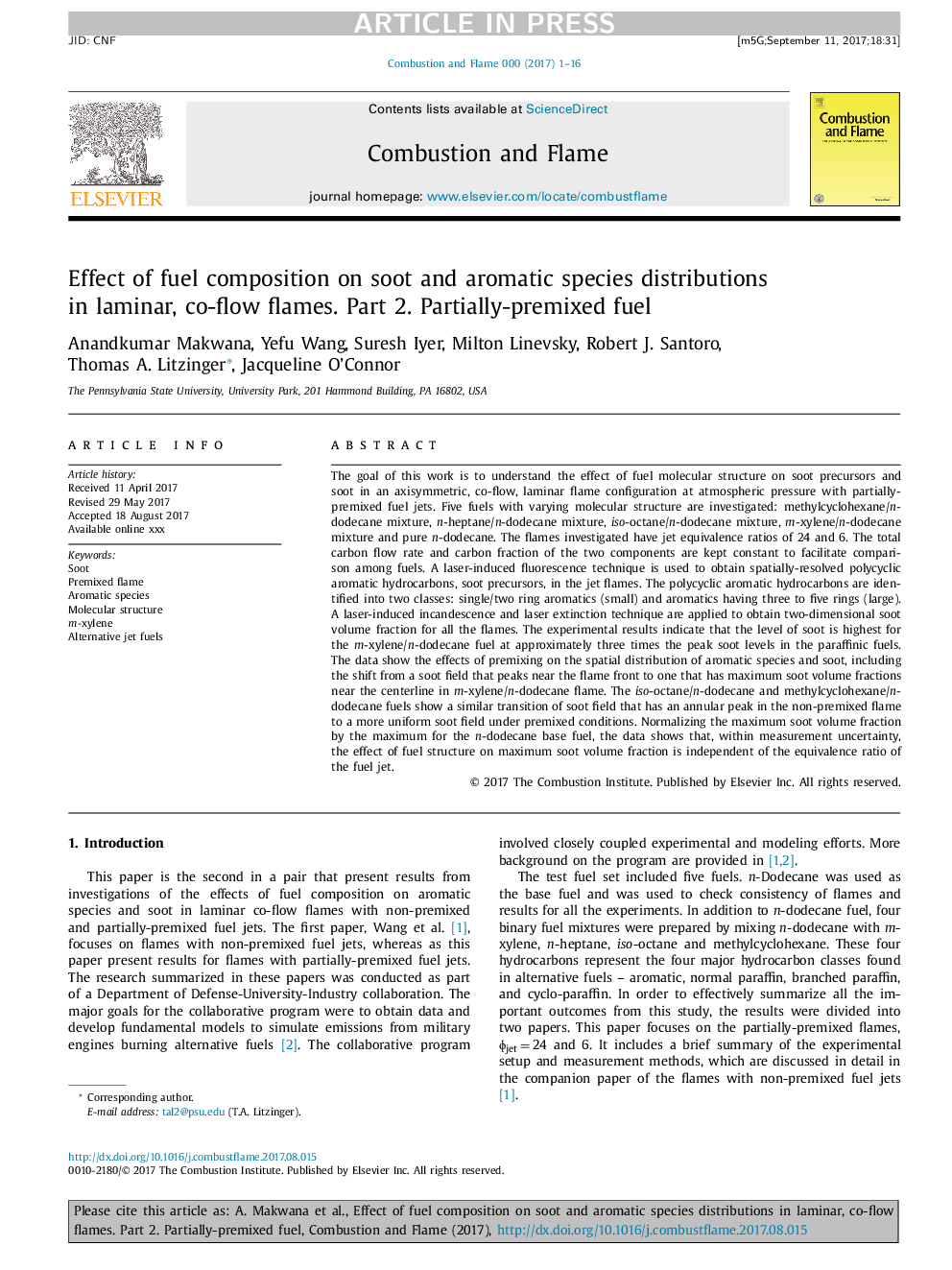| Article ID | Journal | Published Year | Pages | File Type |
|---|---|---|---|---|
| 6593931 | Combustion and Flame | 2018 | 16 Pages |
Abstract
The goal of this work is to understand the effect of fuel molecular structure on soot precursors and soot in an axisymmetric, co-flow, laminar flame configuration at atmospheric pressure with partially-premixed fuel jets. Five fuels with varying molecular structure are investigated: methylcyclohexane/n-dodecane mixture, n-heptane/n-dodecane mixture, iso-octane/n-dodecane mixture, m-xylene/n-dodecane mixture and pure n-dodecane. The flames investigated have jet equivalence ratios of 24 and 6. The total carbon flow rate and carbon fraction of the two components are kept constant to facilitate comparison among fuels. A laser-induced fluorescence technique is used to obtain spatially-resolved polycyclic aromatic hydrocarbons, soot precursors, in the jet flames. The polycyclic aromatic hydrocarbons are identified into two classes: single/two ring aromatics (small) and aromatics having three to five rings (large). A laser-induced incandescence and laser extinction technique are applied to obtain two-dimensional soot volume fraction for all the flames. The experimental results indicate that the level of soot is highest for the m-xylene/n-dodecane fuel at approximately three times the peak soot levels in the paraffinic fuels. The data show the effects of premixing on the spatial distribution of aromatic species and soot, including the shift from a soot field that peaks near the flame front to one that has maximum soot volume fractions near the centerline in m-xylene/n-dodecane flame. The iso-octane/n-dodecane and methylcyclohexane/n-dodecane fuels show a similar transition of soot field that has an annular peak in the non-premixed flame to a more uniform soot field under premixed conditions. Normalizing the maximum soot volume fraction by the maximum for the n-dodecane base fuel, the data shows that, within measurement uncertainty, the effect of fuel structure on maximum soot volume fraction is independent of the equivalence ratio of the fuel jet.
Related Topics
Physical Sciences and Engineering
Chemical Engineering
Chemical Engineering (General)
Authors
Anandkumar Makwana, Wang Yefu, Suresh Iyer, Milton Linevsky, Robert J. Santoro, Thomas A. Litzinger, Jacqueline O'Connor,
